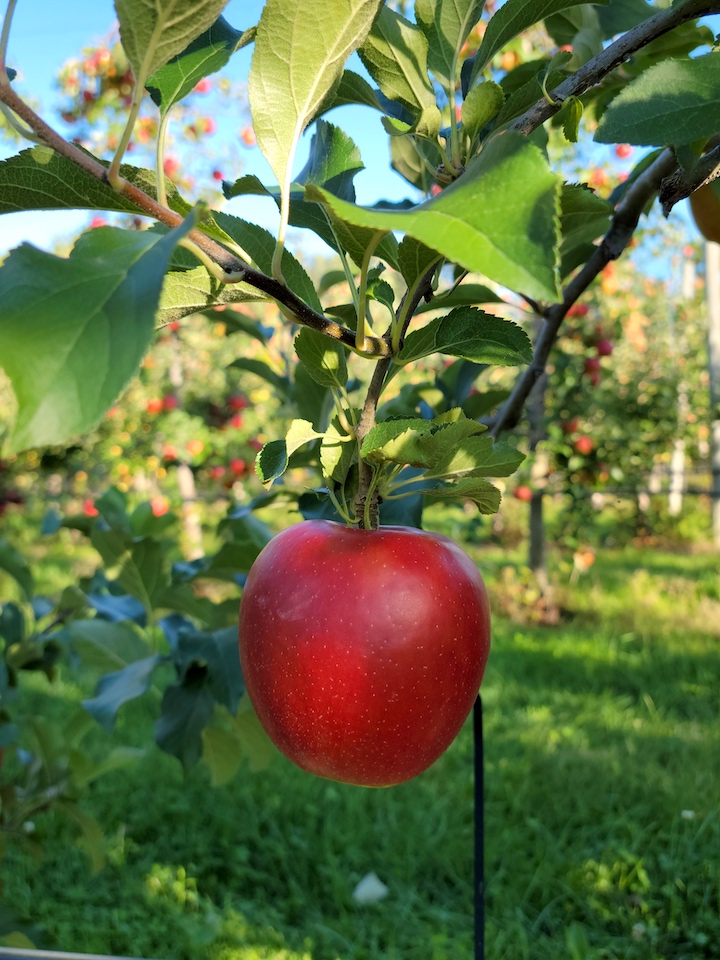
APPLES, compared to most fruits and vegetables, are remarkably sturdy. Handled and stored properly, they will keep for weeks or even months, depending on the variety.
The most effective way to keep apples fresh and crisp is to keep them cold.
Apples continue to ripen, or respire, after they are picked, through pores called lenticels, the tiny dots on an apple’s skin. But apples ripen post-harvest much more slowly than other fruits like bananas or pears.
Keeping apples cold in the refrigerator (ideally in a bag in the crisper drawer) further slows the process, lengthening their window of peak flavor and texture.
A bowl of apples on the dining room table is a beautiful sight. But to preserve their crispness, put the fruit in the refrigerator overnight.
Growers keep their apples cold by placing them in regular or controlled-atmosphere (CA) storage rooms as soon as they are picked.
Cold storage rooms are like giant refrigerators, and keep apples fresh for several months, into January.
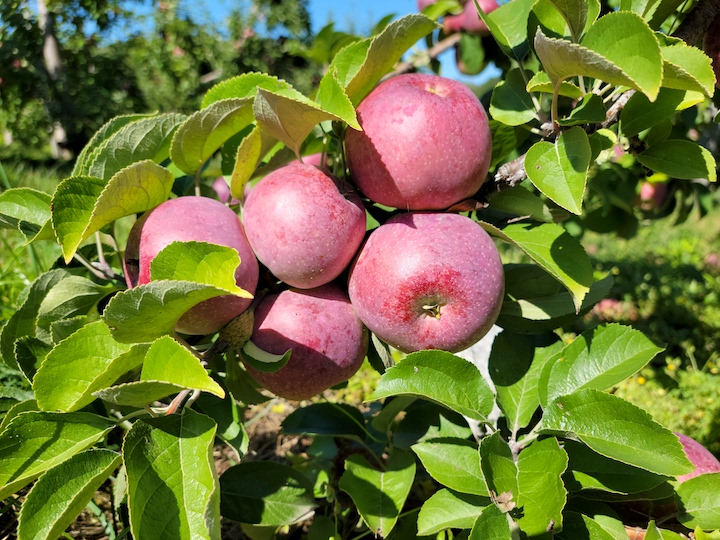
In CA storage, the apples are put in sealed, air-tight rooms immediately after harvest. The oxygen in the room is then sharply reduced and carbon dioxide levels increased. Combined with temperature and humidity controls, this brings ripening to a virtual standstill until the room is opened, months later.
With CA storage, New England apples can be enjoyed throughout the year. If you get a soft apple, it likely occurred long after it left the orchard or packinghouse because it was not kept cold somewhere along the way.
* * *
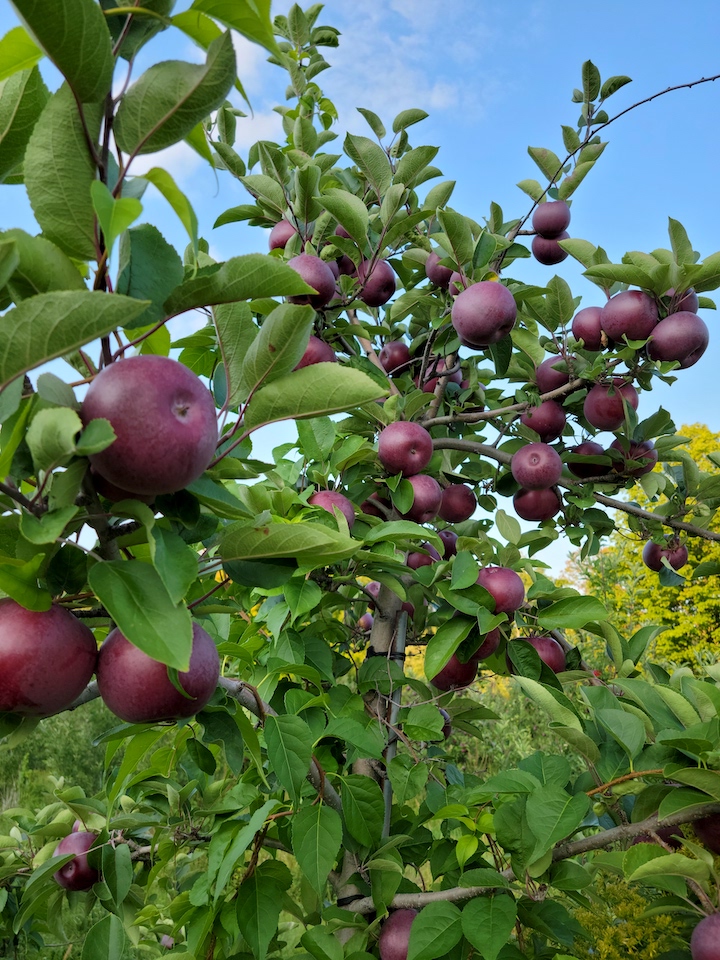
REGARDLESS of how they are stored, the flavor of some apple varieties changes over time, becoming sweeter and more complex. When trying a new apple, buy a bag (or at least several of them).
Enjoy some right away, but put the rest aside in your refrigerator. Sample a few in a week, and again in 30 days, and note any differences in juiciness and flavor.
Apples are juicy and crisp, and some varieties, like McIntosh, bruise more easily than others. They don’t need as much coddling as a banana or strawberry, but handle apples with care.
If an apple is bruised, the area can easily be removed, but there is no harm in eating it; most bruises are small and sweeter than the surrounding flesh.
Most blemishes on an apple’s skin are minor or cosmetic, in fact, and can easily be cut off or ignored. Even light hail damage leaves only a small ding or dent, which mars the apple in appearance only. It tastes the same.
Fortunately there have been few reports of hail in New England this year. But if you see dents or spots on your apples, just work around them and enjoy an otherwise perfect apple.
* * *
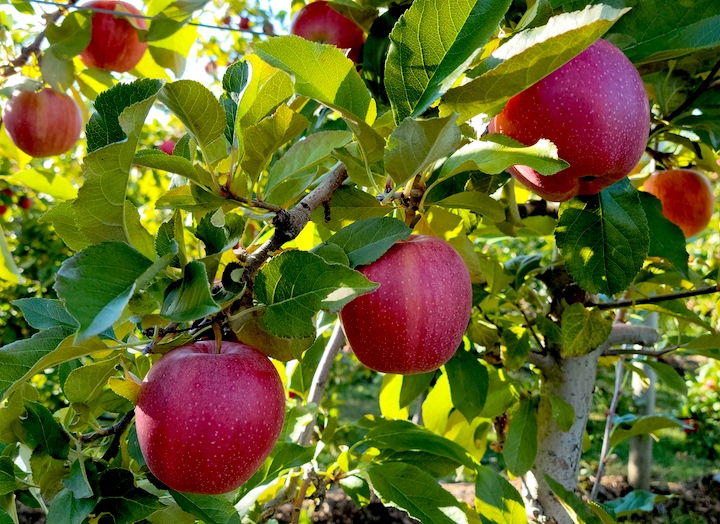
WHENEVER POSSIBLE, eat the peel. Much of the apple’s nutrients are packed just beneath it.
Apples are packed with antioxidants that strengthen our immune systems.
Pectin, a soluble fiber in apples, encourages beneficial bacteria in our digestive tract. Pectin also helps lower cholesterol.
Apples are potassium rich and support normal blood pressure.
The peel adds color and texture to baked goods and requires less time to prepare.
* * *
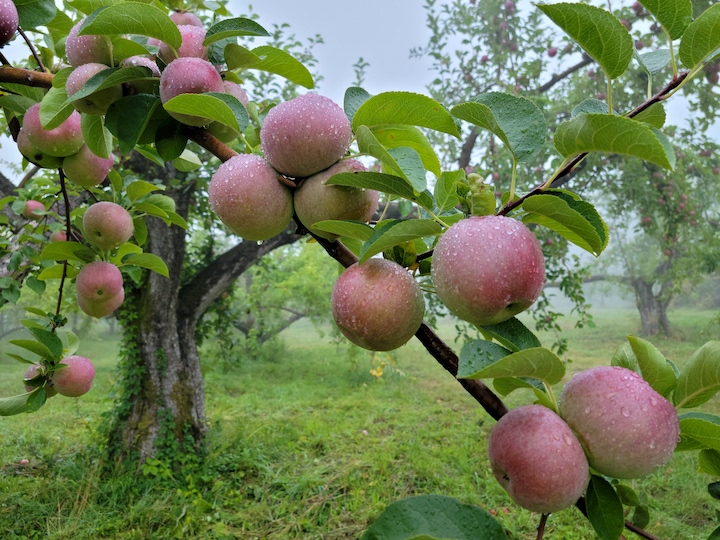
“BLOOM” is the thin, white, naturally occurring coating on an apple that helps keep it crisp and juicy.
It’s a good idea to wash (or shine) any produce before eating it in case others have handled it before you. But an apple’s waxy bloom is tasteless and harmless.
Some apple varieties, notably Cortland, develop a greasy peel in storage that also helps the apple retain moisture. It, too, is easily rubbed off and harmless to eat.
* * *
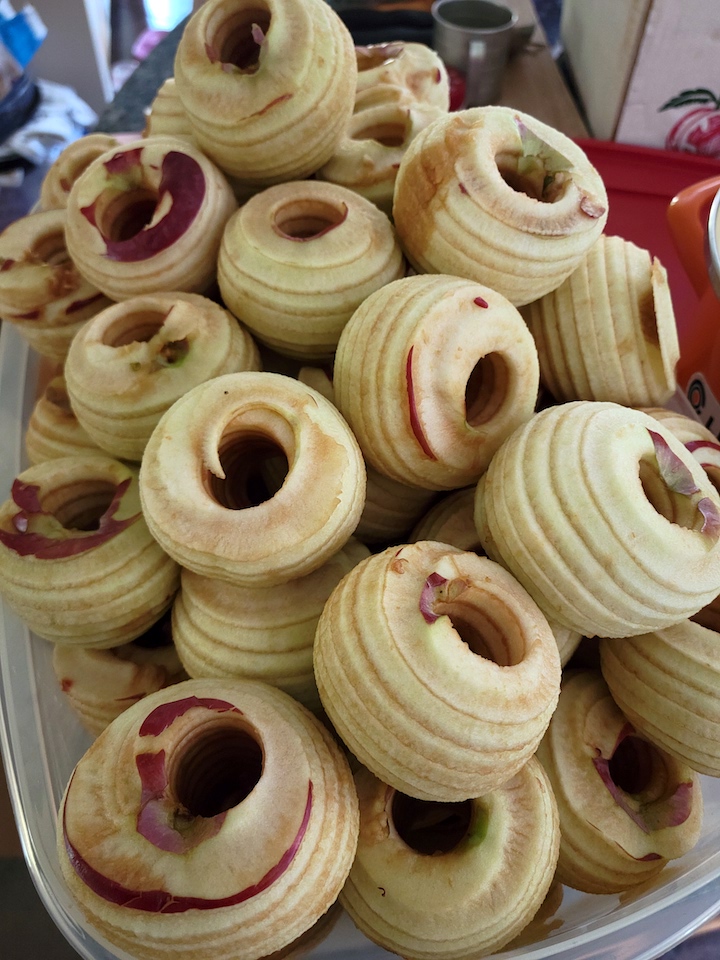
APPLE CRISP IS BACK at the Eastern States Exposition (“The Big E”) — on weekends.
New England Apple Association’s booth in the Massachusetts Building features fresh apples from a number of Massachusetts orchards, plus single-serving apple pies, apple squares, cider donuts, and fresh cider.
The popular apple crisp will only be available Saturdays and Sundays because each tray is made by hand by booth manager Bar Lois Weeks, using her Grandmother’s Apple Crisp recipe.
New England’s largest fair opens Friday, September 16, and concludes its 17-day run Sunday, October 2.
For the opening weekend we’ll have fresh-picked McIntosh from Brookfield Orchards North Brookfield, Breezeland Orchards, Warren, and Nestrovich Fruit Farm Granville, Massachusetts.
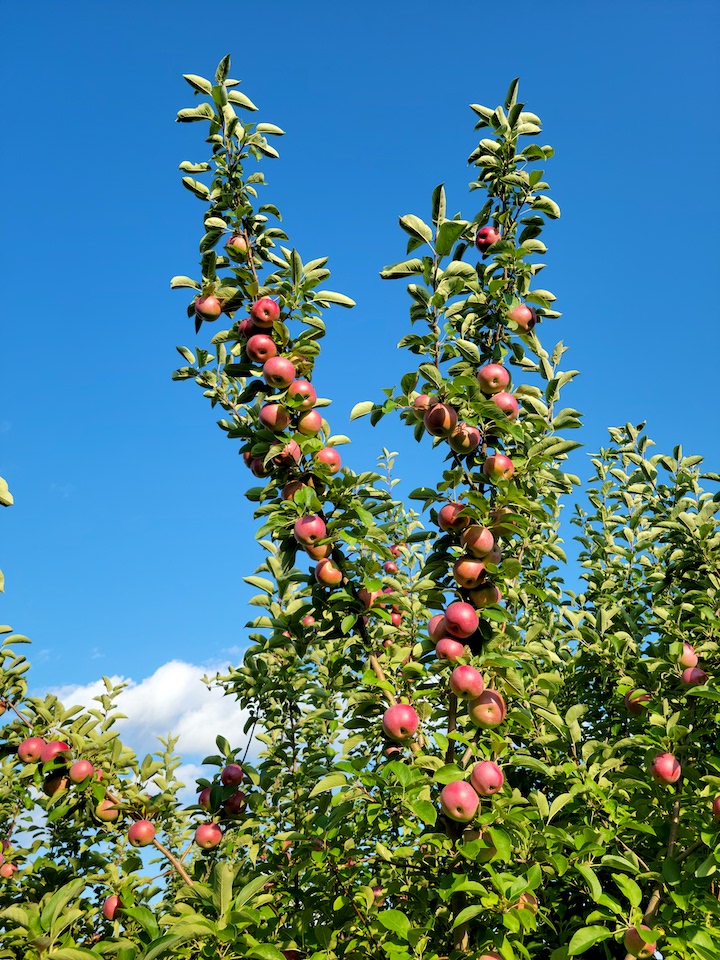
We will have new varieties, Ginger Gold, Paula Red, and Williams’ Pride, and heirlooms Red Gravenstein and Summer Rambo from Red Apple Farm, Phillipston, Massachusetts.
Gala, Ginger Gold, Gravenstein, and McIntosh are from Tougas Family Farm, Northborough, Massachusetts.
As always, visitors can satisfy their thirst with fresh cider from Carlson Orchards, served hot, cold, or in apple pie smoothies.
The latter is a singular concoction of Weeks, a frothy mix of cider, a whole apple, ice cream, and a special blend of spices.
Massachusetts Building hours are 10 a.m. to 9 p.m. daily. If you are not already making plans to visit an orchard, here’s a chance to taste the apples of several at once.
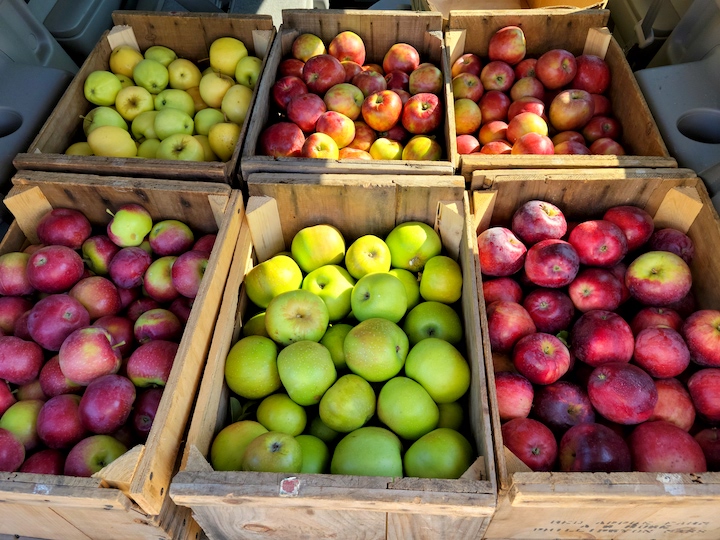
Grandmother Lois’ Apple Crisp
6 New England apples, like Northern Spy. McIntosh, or Cortland
1/4 c sugar
2 t cinnamon
Apple crisp topping
1/2 c (1 stick) cold, cubed butter
2/3 c brown sugar
3/4 c white or whole wheat flour
3/4 c old-fashioned oats
Preheat oven to 350°F.
Peel, core, and slice apples into 8×8 pan. Combine sugar and cinnamon and sprinkle over apples.
In medium bowl, use pastry cutter to blend butter and brown sugar. With fingers, mix in flour and oats until crumbly texture. Cover the apples.
Bake 45 minutes, or until apples have softened and juices are bubbling around the edges.